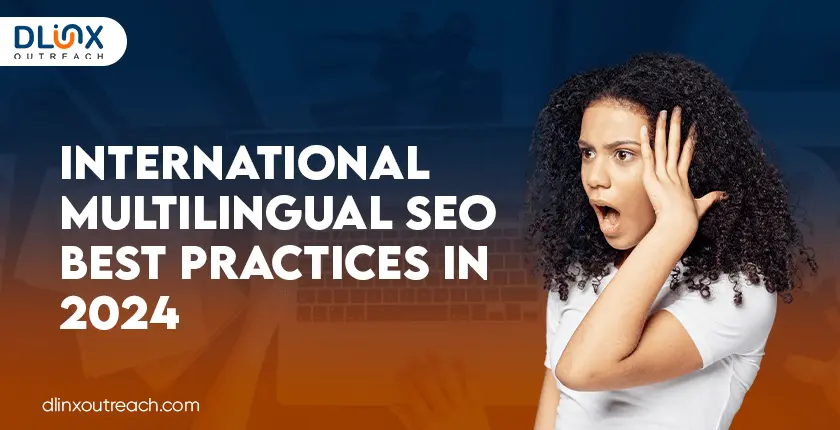Indexing and ranking means that Google recognizes your content and has categorized it based on its keywords. Coming to the question “How long does it take for a blog post to rank and Index on Google’s search engine result pages (SERPs)?” is not straightforward.
Naively speaking, it could take one week to 3 months if all the internal and external factors align with Google’s guidelines and on and off-page SEO is optimized as per the recent trends and advancements.
A page or blog can take even more than a year if it does not understand the factors that could expedite the process of ranking. Google’s crawler keeps on looking for new pages and websites; once Google’s algorithm finds your blog, it keeps monitoring it for some time for changes and authenticity. Once a page is authenticated by the backlinks, traffic, and many other factors, Google index it, and it start appearing in the Search engine result pages (SERPs).
The higher you move in the ranking or position in the SERPs, the tougher the competition will be. You need to work hard on different avenues to rank your page higher.
The far most important factor is how well your blog is SEO optimized. Both on and off-page SEO are the main factors for ranking your blog; Dlinx Outreach is an agency that could help you to SEO optimize your blog.
Read | Ways to Optimize Your Digital Strategy and SEO
Ranking vs. Ranking Well
The ranking is not just about categorization by Google but also about appearing in the search results. After appearing in the search results, your goal should be to rank on the first page of SERPs because people hardly visit the second page of SERPs for information. A study by Ahrefs suggests that the average top 10 ranking page is 2+ years old.
Factors Affecting the Ranking Time
It is also believed that there are around 200 parameters that Google uses for the ranking process. Though Google never accepts nor denies that, one can have an educated guess about these. So, based on our experience and SEO tools assessments, the following are some of the important factors.
Content Quality
What are the main features of high-quality content? Google’s Search quality raters analyze and review the search results and, based on their analysis, assign the page quality to each link. There are four main attributes of the content that Google uses in its quality analysis, abbreviated as E-E-A-T, which are experience, expertise, authoritativeness, and trustworthiness.
Experience: If you are writing a blog or an article, try to add your experience or others’ experience. Personal experience gives a new and authentic flavor to the content. Try to narrate stories from your hands-on experiences and encounters.
Expertise: Your content should show your expertise in that niche. You are trying to suggest multiple solutions to a problem, giving the reader multiple options. Updating your content with new trends and advancements is also recommended. Be ready to change and adapt as things change with the advancements. Be ready to learn, and your expertise should be reflected in your write-ups.
Authoritativeness: Being authoritativeness, one needs to take care of a couple of things in their content. Try to engage famous writers and personalities in your content. Endorse your recommendations and views with the stats from credible sources. Add infographics and videos for more credibility. Keep auditing your content for the removal of spammy comments and links.
Trustworthiness: Share the experiences of your customers in your content. Reviews and testimonies are real assets for any brand. Headings and subheadings should be clear and precise. One may add FAQs and the author’s bio for the trust buildup.
Keyword Competition
Keywords are the text that people mostly use to search, and this data can be easily extracted using SEO tools like Ahrefs, Moz, and Semrush. When Google reads your blog, it looks for the keywords and saves the data in its repository based on related keywords. It is believed that only 5.7% ranked in the top 10 if they used at least one keyword in a year.
The picture below shows the keywords in the drop-down list when the “top SEO tool” was searched.

So, use the keywords in your blog related to your niche. It is also worth noting that do not use keywords unrelated to your topic and niche, as Google might save it in a totally different repository, and this way, you may lose your credibility.
It is also recommended that you do not stuff your blog with the keywords. Stuffing is not allowed, and it raises a red flag when Google crawls your page. Stats suggest that only 0.3% of pages ranked in the top 10 who stuffed their blog with keywords. Keywords should not be large; they should be around 3 to 4 words for easy remembrance.
Infographic Indexing
Do add high-quality pictures to your content and get them indexed as well. With features like Google’s Lens, it is vital now that one should add HD pictures and get them indexed as well. Since more and more people are now searching using pictures, indexing infographics will help your page appear in the search.
Infographics and pictures are also more catchy than the text, making your blog more presentable and attractive, increasing organic traffic, and expediting the ranking process.
Backlinks
Backlinks are the hyperlinked texts within and on external sites that divert traffic to your page. These links are one of the key contributors to ranking. These links pass the authority to your page, which expedites the process of ranking. The attributes of the most powerful backlinks can be found in this article.
Backlinks pass the authority in the form of “Link Juice,” which conveys to Google that the linked page is credible and authoritative. As per the study by Backlinko, 95% of published pages do not have any single backlink, which is hard to rank. Furthermore, the number 1 page has 3.8 times more backlinks than the number 2.
Read | What are the Types of Link Insertion in SEO
Internal Link Structure
More visitors means more authority, which means your page will be ranked more quickly. So, one must build the internal link structure to pass on visitors within your sites. This structure is essential for keeping the visitor for a longer period. The longer a visitor stays on your page, the higher the chances for the blog to rank.
The picture is from a blog that links to another internal blog. This way, one can engage a visitor for a longer period.

Mobile Friendly
Mobiles are a vital part of our lives now, whether we have to make a call, text or search for something. It is reported that over half of the website’s traffic comes from smartphones, which shows how important is to make your page and site mobile friendly.
So, your site should be mobile-friendly for more accessibility and readability. If your site is not mobile-friendly, you are losing many visitors. So, fewer visitors means fewer chances of getting indexed and ranked.
The picture below shows the mobile version of the New York Times, which is very handy and readable.

Social Media Visibility
Social media is the lifeline of SEO in this era. No strategy is successful without considering the dynamics of social media. As per the stats, an average adult in the US spends approximately 2 hours daily on social media.
Your social media page increases your content’s visibility and refers to the traffic on the main platform. This increase in visibility and traffic passes the signal to Google about the credibility and authenticity of the platform, and Google starts considering your blog in its search results.
It is also worth mentioning that each social media has some customization and limitations. So, anchor your strategy as per the requirement of the particular platform. Moreover, show your visibility on as many platforms as possible.
Sending Emails
Emails are one of the oldest mediums of advertisement and information. Please email your subscribers and visitors about the new blog on your platform. Please send an abstract of your write-up to entice them to visit your website. This is also a well-proven way to increase your visibility.
Paid Visibility
Running ads on Facebook and Google can also help you to increase your visibility. Paying bots to create backlinks for visibility on malicious and spammy websites might be a cheap and attractive way for visibility. Still, it is not a long-term and lasting solution, as Google crawlers can catch such activities and take you down.
Running ads on different platforms is a legitimate and authentic way to increase your visibility. Google and Facebook ads are the best options for running ads.
On-Page SEO
On-page SEO is essential for early indexing and ranking. Try to use keywords, add headings, and subheadings. The meta description is also necessary for the web crawlers to recognize. Use the table of contents and scroll bars at the top and side of your page. All these things pass the signal to Google and also improve the user’s experience.
Moreover, the URL of your website should be easy to read and remember. Fussy and clumsy web addresses with many symbols and characters give a raw look.
Your loading speed and refresh rate are also very important, as Google gives it high weightage in its ranking. The bounce rate will increase if your load time is longer than 2 seconds, which could mount up to 50%. So keep checking your loading and refreshing rate for an easy ranking.
So, keep auditing your page with the help of SEO tools. These tools analyze the website’s overall health and keep you updated with the underperforming areas of your page.
The picture below is from a blog published at Semrush. You can see the clear headings, table of contents and HD pictures. This page setup is so well organized that it is very easy to navigate.

Domain Authority
Consider a scenario where you publish a blog on high- and low-DA sites. Which one is easy to rank? Obviously, the one that is published on a high DA site. So, the DA of your domain is also one of the decisive factors in the time to rank a blog. So keep updating your website with new and updated content, change your site’s color scheme, and keep your site SEO optimized.
Conclusion
In short, it is very hard to give a number to the time taken to rank a blog. It could vary between weeks to 3 months and even a year to appear in the SERPs. So Google will only be able to rank a blog if you have linked your domain in the Search Console of Google, have many referring domains, and have great content related to your niche, stuffed with keywords and meta descriptions. Your on-page SEO should be proper for better performance.
Apart from on-page SEO, off-page SEO is also equally important. Running ads on different platforms, creating your pages on social media, and sending emails about your blog are the key factors for increasing your visibility.
Indexing and ranking your blog at the earliest is not that easy as it requires manipulations of many internal and external parameters. It requires expertise in SEO and marketing. Luckily, Dlinx Outreach is a team of experts with plenty of experience in on-page and off-page SEO, which helps you rank your page early. Feel free to contact us for more information and a quote.
Frequently Asked Questions
How long does it take to rank a page?
Well, depending upon many factors, it could take one week to 3 months for Google to rank a page.
How important is the auditing of your page?
Auditing is very important as it gives you an idea about your loading and refreshing speed—the traffic on your page and the working of your backlinks and ads.
How important is your internal link structure?
Internal links are very important, as they increase visitors’ residence time at your platforms. The more time a visitor spends on your platform, your site’s credibility increases.
Can social media help in ranking your blog fast?
Yes, social media can help you gain visibility and increase the traffic on your page. This increase in traffic can lead to Google’s recognition and expedite the ranking process.
How important is on-page SEO in the ranking?
On-page SEO is crucial for ranking, making your page more presentable and accessible.
Can Dlinx Outreach help to rank your blog?
Dlinx Outreach is an expert in SEO and marketing. It can devise the strategy for both on and off the page to increase your visibility for an early ranking.
Related Articles:







